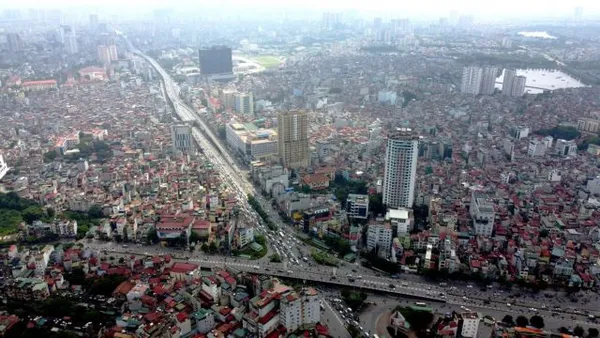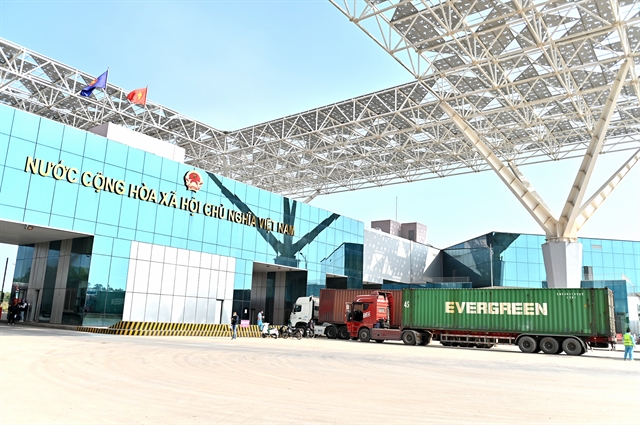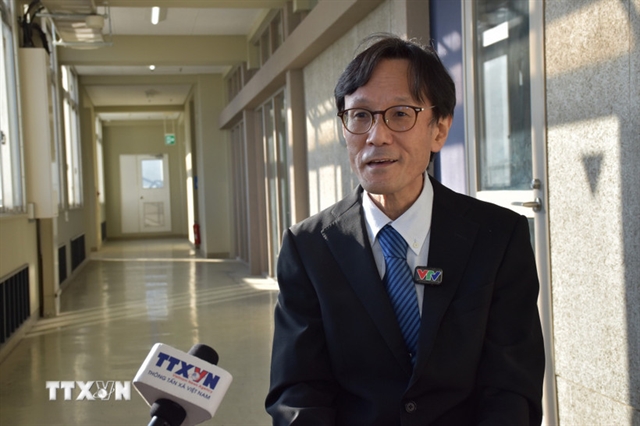 Opinion
Opinion

Recently, thousands of container trucks have become stranded at border gates in northern provinces, queuing for customs clearance to enter China. This has caused damage to Vietnamese enterprises. The Vietnam News Agency correspondent in China spoke with Nông Đức Lai, Commercial Counselor of the Vietnamese Embassy in China, to learn about the efforts of the Việt Nam Trade Office in China to solve the current congestion of goods at the border of the two countries.

|
| Móng Cái border gate in northern Quảng Ninh Province. China’s tightened COVID-19 preventive measures on people, vehicles and goods has led to sluggish customs clearance. Some border gates are processing customs procedures at a rate much below normal. VNA/VNS Photo |
Recently, thousands of container trucks have become stranded at border gates in northern provinces, queuing for customs clearance to enter China. This has caused damage to Vietnamese enterprises. The Vietnam News Agency correspondent in China spoke with Nông Đức Lai, Commercial Counselor of the Vietnamese Embassy in China, to learn about the efforts of the Việt Nam Trade Office in China to solve the current congestion of goods at the border of the two countries.
There is currently significant traffic congestion at the Việt Nam - China border, what is the cause for this?
Recently, congestion has occurred at many border gates between Việt Nam and China. This is not a new problem but has happened for many years. This year, however, the situation is more serious. I think there are two main reasons for this problem.
Firstly, in the last period of the year and as the Lunar New Year draws near, the volume of import and export goods between the two countries is very high in order to serve the needs of both sides to prepare for the biggest holiday of the year. Like Việt Nam, Chinese people attach special importance to this traditional holiday, the demand for some food items increases during the Lunar New Year, for example, products with red (the colour of luck) such as watermelon, dragon fruit or aquatic products (shrimp and crab) is always huge.
Secondly, as the COVID-19 pandemic is still developing in the region and the world, recently, with the resolute policy of maintaining “Zero COVID" (bringing the number of infections in the community to zero), China continuously strengthens pandemic prevention and control measures, impacting import and export activities between China and bordering countries and with Việt Nam.
In recent pandemic prevention policies, the Chinese Government has asked border-gate localities to strictly implement border management measures, including managing entry and exit activities for people and goods.
What efforts have been made by the Việt Nam Trade Office in China to resolve the congestion of goods at the Việt Nam - China border gates?
The Việt Nam Trade Office in Beijing has coordinated with the trade office branches in Nanning and Kunming to regularly monitor the situation at the Chinese border gates, promptly collect information related to China's port/border gate management policies and activities for import and export of goods.
We try to have the earliest reports with specific recommendations for Vietnamese authorities in order to promptly inform businesses about the situation and plan to support Việt Nam's import and export activities to China.
In addition, the Trade Office always keeps close contact with the customs and central trade management agencies of China in order to actively exchange information and respond to the opinions of relevant ministries and sectors of the two sides on issues related to trade activities and trade facilitation at the Việt Nam - China border gates.
What should Vietnamese authorities and businesses do to minimise damage caused by congestion at the border with China?
In the immediate future, Việt Nam needs to take measures to regulate the amount of goods from the source (from localities). We should also reduce the goods brought to the border gate areas at this time to release the goods that are already there in advance to avoid increasing congestion.
We should regulate the types of goods that can be cleared at border gates in some localities besides Lạng Sơn and Quảng Ninh. We need to encourage the export of goods that can be exported through official channels to switch to sea transport.
In addition, we also need to continue to actively discuss with relevant agencies and localities at the Chinese border gate to remove difficulties and obstacles from the two sides, because currently the amount of goods from China to Việt Nam through land border gates at the end of the year is also very high. VNS




